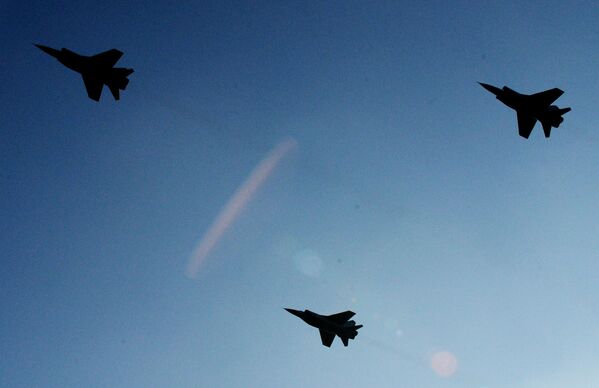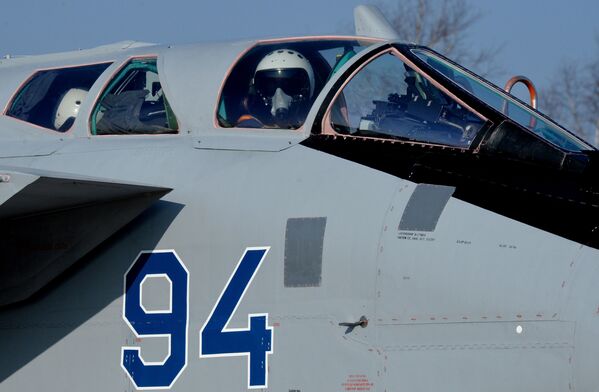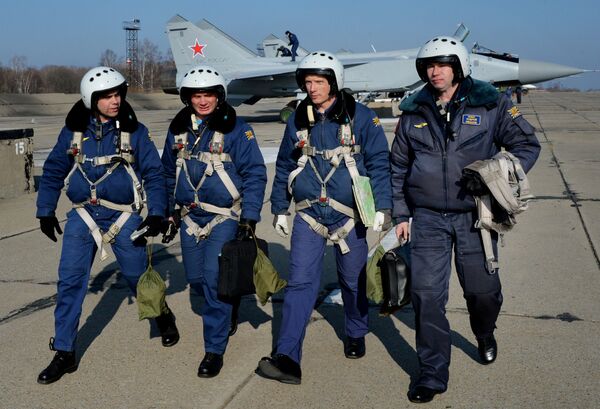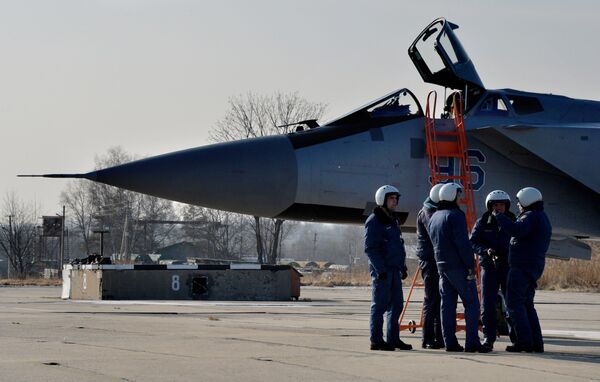The Russian Air Forces regiment stationed near Vladivostok received three new and deadly additions — cutting-edge MiG-31BM interceptors.

1/6
© Sputnik / Vitaliy Ankov
MiG-31BM is an upgraded version of the MiG-31B interceptor, developed in the 1990s.

2/6
© Sputnik / Vitaliy Ankov
The new interceptor is outfitted with sophisticated onboard electronics, radar equipment and carries much more powerful armaments.

3/6
© Sputnik / Vitaliy Ankov
MiG-31BM is capable of simultaneously tracking up to 10 targets. The aircraft can also engage up to 6 targets at the same time.

4/6
© Sputnik / Vitaliy Ankov
According to test pilots, the combat potential of the new aircraft has been doubled compared to the original MiG-31.

5/6
© Sputnik / Vitaliy Ankov
During 2016, the Su-27SM and MiG-31 fighter aircraft, which currently serve as the mainstay of the regiment's forces, will be gradually replaced by the next-generation warplanes like MiG-31BM.

6/6
© Sputnik / Vitaliy Ankov
The pilots of the first three MiG-31BM interceptors at a military airbase near Vladivostok.



